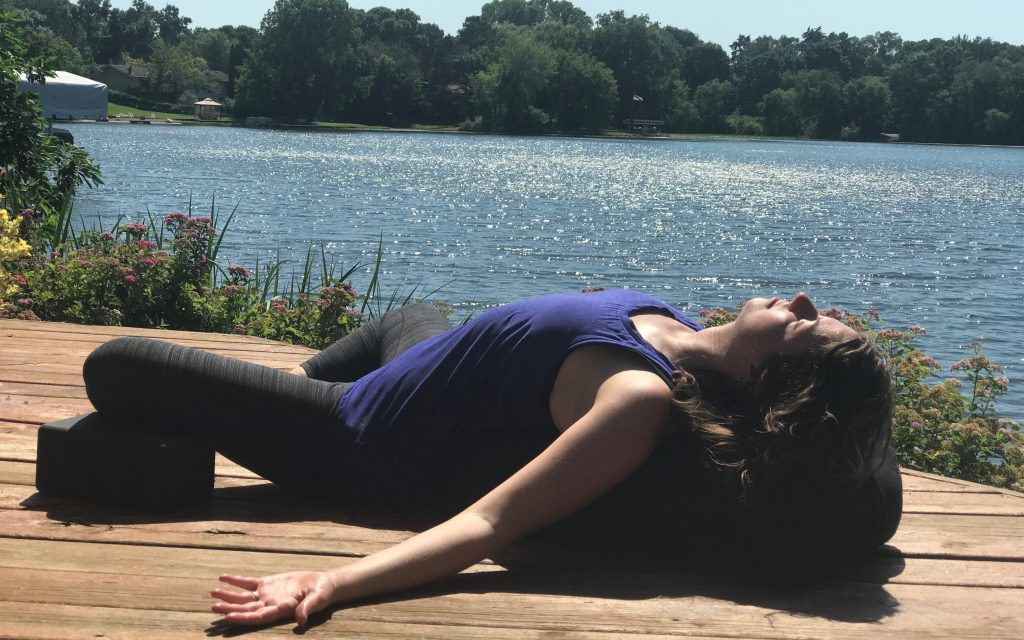A New Moon is a New Beginning…
Today is another New Moon, that perfect time for checking in with whatever feels most vital to us right now, setting intentions, and beginning again. But before we begin that process of sending out our intentions, dreams, and wishes to the universe, it is vital to first center ourselves in gratitude.
Although the Full Moon is often seen as the perfect time to engage in a practice of gratitude, the New Moon is also an ideal time to remind ourselves of this important practice.
It’s much more difficult to imagine what we want or what could be when we are in a state of stress, worry, or resentment. When we come into a state of gratitude, we re-establish that direct link to our true selves. We are able to more clearly see, feel, and understand what it is we are here for, as well as the steps we need to take to re-align with our purpose.
If you need more convincing on the benefits of practicing gratitude, consider the research being done on the topic. Studies are showing us a clear link between gratitude and health: gratitude helps us better manage stress; it can boost the immune system; it leads to better outcomes with disease and surgery; and gratitude helps to promote a sense of optimism and community even in the face of tragedy (good article here).
We need more of all of this, don’t we?
As far as sending your clear intentions out to the universe each month, astrologer Yasmin Boland explains, “[Gratitude] increases your vibration, so you will be happier; and the higher and clearer your vibration, the better able you will be to manifest…when the New Moon rolls around.”
There are lots of reasons for practicing gratitude – physical, mental, emotional and spiritual benefits. Find a reason that you connect with and begin your practice today. As you scroll down, you will find a simple Yin Yoga practice that I’ve provided to help you get started in a very tangible way with the practice of gratitude.
You cannot go wrong with a practice of gratitude and I guarantee that you will start to feel some benefit rather quickly.
Choose to Center Yourself in Gratitude & Joy w/ a Simple Yin Yoga Practice Today (And Everyday)
About a month ago I introduced the step-by-step process for setting intentions with the New Moon, that monthly reminder to check in, reset, and get re-energized about your dreams, goals, and resolutions (New Moon: Time for Clarity & Intention).
But today I want to focus on the one step that precedes all the others:
Gratitude.
Let’s see if we can break down what gratitude actually is. There are 3 ways that I think of gratitude.
Gratitude is:
- Cultivated in the mind
- Felt in the heart
- Displayed in the body
We could begin this cascade of gratitude by shifting our thoughts from focusing on lack, resentment, hurt, and sorrow to focusing on our current abundance and what we DO have; by seeking to find the goodness that is present in the world; by seeing the beauty in the simple pleasures of life; by noticing the love present in those around us.
These thoughts would eventually trickle from the mind to the heart, where we would feel a softening, an opening, a warm flicker of joyfulness returning.
From here we would find ourselves better able to breathe deeply, breathing not just shallowly in the chest, but drawing deep healing breath down into the belly.
But at times it can feel like an impossible task to muster gratitude in our thoughts and hearts.
In these cases, we can shortcut this gratitude cascade by starting at the end. Though the mind and heart often seem to elude our control, the body can be more willing.
So when we say that gratitude is “displayed in the body” what does that even mean?
A grateful body is one that is soft, open, and receptive, especially around the area of the heart. This is the state in which we can experience AND express gratitude.
The Reclining Butterfly Pose below is an excellent starting place for your practice of gratitude. This Yin Yoga pose just also happens to feel amazing after a long day of sitting at a desk, doing yard work, or hauling around small children!
How to Practice Reclining Butterfly Pose (Indoors OR Outdoors!):
Props: A bolster and two blocks. If you don’t have yoga props, don’t worry! You can practice this flat on your back or can roll up a yoga mat and use this as a bolster under your back (along the spine and supporting the head).

- Sit on the ground just in front of your bolster (don’t sit on the bolster), and then lie back onto the bolster. If this is too extreme, try adding the support of a folded up blanket under your head and/or back, or forego the bolster and try being flat on the ground instead.
- Bring the soles of the feet together allowing your knees to “butterfly” out to the sides. Tuck one block under each knee (or use bed/couch pillows, rolled up blankets/towels, etc). The feet don’t need to be tucked up close to the groin; this pose is better suited to your feet being farther away from the groin, really allowing your hips and knees to relax downwards.
- Spread your arms out to the sides, just to the point where you feel a gentle stretch across the chest. You can also bring the arms overhead, curling them around the head if this feels better. Be mindful of your shoulders and don’t push it to a place of pain.
- Now take a big DEEP BREATH down into your belly. Then open up your mouth and exhale strongly out through the mouth. The belly should expand like a balloon on your inhale, and deflate on your exhale. Repeat this for 3x total.
- Really let your body feel heavy, sinking down into your props and sinking down towards the Earth. Let go of any muscular holding and allow your muscles to relax. If this becomes too intense, adjust your props to a place where you have enough support to really let go and relax into the props.
- Find your “Goldilocks” place of sensation. I call it this because we’re looking for sensation that is not too intense, not too gentle. You want to feel sensation in the body, but stop at that first entry point of sensation and relax there. In Yin Yoga we call this your “edge.”
- Close your eyes (you’re welcome to use an eye pillow over the eyes if you’ve got one) and begin to listen to your breath, that quiet rhythm of inhaling and exhaling.
- Set a timer so you can really let go and not worry about the time.
- If it seems difficult to stay still that long, start with 5 minutes and add a minute each time you practice to slowly work up to 15 or even 20 minutes.
- You might want to allow for a few extra minutes after you come out of the pose to jot down some notes in your journal.
- Discomfort IS normal, but pain is NOT. Shift your body or come out of the pose early if you experience pain.
- In the case of discomfort, keep breathing and relaxing the muscles – you will find as you stay here that your body becomes softer and more able to relax.
- As far as mental/emotional discomfort, this is also normal and expected! When you notice your mind jumping all around, see if you can direct it back to your breath. And then every time the mind wanders, just notice wherever it goes, and then gently direct it back to your breath. With time, this will become a natural reflex to guide the mind back to the breath. Think of it like a practice just like anything else – it takes time to build a muscle, just like it takes time to train the mind.
Journaling Practice (Optional Add-On):
In this way, when we begin our practice of gratitude by attending to the body first, we are allowing that physical openness to calm and soften the mind and the heart. This softness and openness will assist us in being better able to focus on that which is good and that which we are grateful for.
You might choose to use these 5-15 minutes in the pose to simply calm the mind and heart by breathing deeply and slowly and keeping your focus on the breath. Or you may find this becomes a good time to begin to cultivate some thoughts of gratitude in the mind. As you cultivate these thoughts, allow yourself to really feel the feeling of gratitude in your heart, as well.
You may wish to have a journal near you in order to jot down some of these thoughts at the end of your practice, in order to be able to reference them again at a later time.






